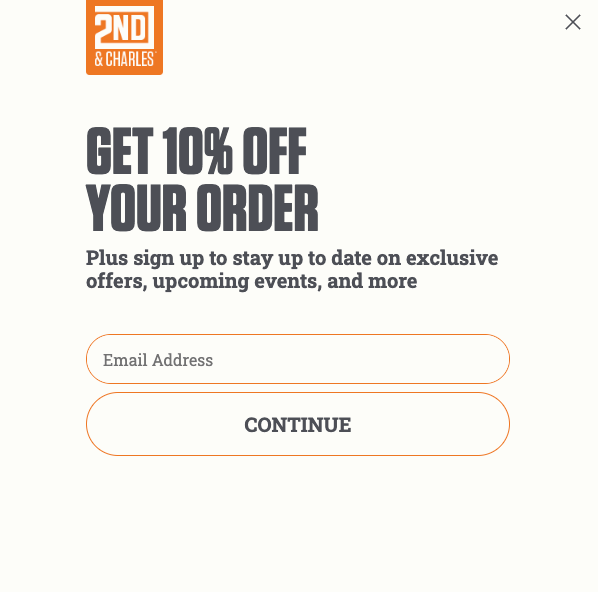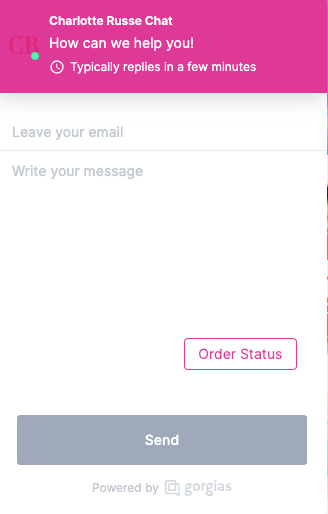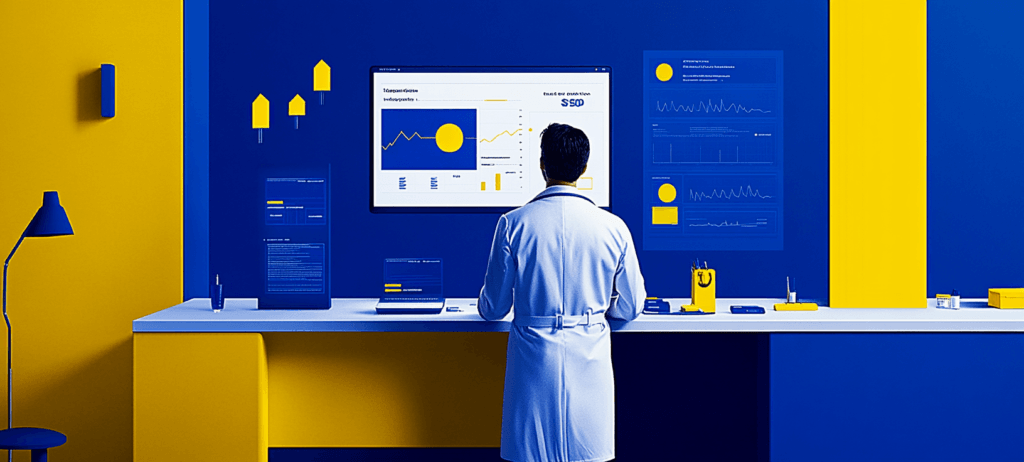-
 10 min. read
10 min. read
-
 Macy Storm
Macy Storm Content Marketing Consultant
Content Marketing Consultant
- Macy is a content marketing consultant with over five years of experience creating content for dozens of industries including home services, recreation, and education. She’s written about every marketing topic under the sun, from SEO to AI to email marketing. Her work has been featured by Search Engine Journal, HubSpot, Entrepreneur, Clutch, and more. In her free time, Macy enjoys crafting, reading comic books, and walking her dog Daisy.
Have you ever visited a website and felt like it tailored its content to you?
If so, you’ve experienced website personalization, and it’s a powerful tool for encouraging prospects to engage with and purchase from your business. But what is it, and how can you do it?
On this page, we’ll go over everything you need to know to personalize your website, including:
- What is personalization?
- Three benefits of website personalization
- Six website personalization examples you can use
Keep reading to learn more about web personalization and find out how you can get started!
P.S. Want to get insider tips and tricks that take your marketing to the next level? Subscribe to Revenue Weekly to get exclusive insight from the agency with over 29 years of experience!
What is website personalization?
Website personalization is the process of creating a tailored experience for individual website visitors as they visit your website. This personalized experience includes everything from hand-picked product recommendations to exclusive offers.
With web personalization, you create a better user experience by delivering what your audience wants and needs.
3 benefits of website personalization
So, why should you do web personalization? Here are three benefits of creating a unique experience for your audience:
1. Website personalization leads to more engagement
One of the most significant benefits of personalizing your website is increased engagement. Life today is busy, and prospects don’t have time to waste looking through products they don’t want or entertaining irrelevant offers.
People want information and offers tailored to their interests –– which is why website personalization is critical for boosting engagement.
You need to deliver the information people want most so they stay engaged with your business.
And people want to see personalized content and offers, too. In fact, 54% of people want to see content personalized to their interests. So, by delivering what your audience wants, they’re more likely to engage with your business.
2. Website personalization leads to more sales
A big benefit of website personalization is that it increases sales for your business. When you’re delivering content, products, and special offers fit to your audience, they take an interest in what you offer.
Once they look into what you’re offering, say workforce management services, they’re more likely to purchase because you provided what they needed. As a result, you increase sales for your company.
3. Website personalization leads to increased customer loyalty
If you personalize your website, you’ll see increased customer loyalty. People don’t want to feel like just another number to your company. They want to feel you value them as a customer.
When you personalize your website, you make your customers feel like you’re taking the time to get to know them to deliver a personalized experience. As a result, they’re more likely to stick with your brand because they trust you’ll provide exactly what they want.
6 website personalization examples you can use on your website
So, how can you do personalization on your website? Here are a few website personalization examples you can use:
Keep reading to learn more about what these website personalization examples do to help you boost engagement and sales for your business!
Website personalization idea #1: Recommendations
One of the best website personalization ideas is to serve personalized recommendations to your audience. When people shop on your website, they can’t discover every product you offer, nor do they have the time to sift through pages of products.
You can make it easy for them by personalizing their recommendations. You can offer personalized recommendations based on products your customers bought previously or based on their browsing behaviors.
Amazon is an excellent example of using product recommendations to encourage people to purchase more products.

They offer product recommendations based on what people purchased previously. It’s a tiny bit of personalization that helps encourage repeat purchases.
Amazon also offers product recommendations based on products people browse. For example, if you’re looking at flowerpots, Amazon makes product recommendations similar to the product page you’re viewing. That way, if the product isn’t quite what the shopper wants, they can see similar offerings that might fit what they need.

Recommendations are a great way to personalize your audience’s experience, help them find the right products, and get them to keep buying products.
Website personalization idea #2: Dynamic content
Next on our list of website personalization examples is dynamic content. Dynamic content is information on the page that changes depending upon who visits the website.
This content is generated based on:
- User behavior: Content generates based on behaviors like what pages and products a user visits, if they add products to their cart, and how long they spend on your website.
- Characteristics: Your content adapts depending upon the demographics and location of the person visiting your website.
- Data: When using dynamic content, what appears on your website depends upon user data. This data includes past purchases and engagements with marketing content.
One example of dynamic content is changing how you address someone when they visit your website.
For example, let’s say you own an outdoor supply store. You could tailor the greeting when someone visits your website based on their interests.
So, if someone who loves to camp visits your website, your greeting may say “Welcome Camper.”
For someone who loves to hike, your greeting might change to say, “Welcome, Hiker.”
These greetings are based on the users’ interactions with your website and their data. It’s a slight touch of personalization, but it can significantly impact how people perceive your brand.
Website personalization idea #3: Pop-ups
Despite the negative reputation they can have, pop-ups are one of the best website personalization ideas you can implement.

Pop-ups allow you to catch your audience’s attention with a personalized offer. You can use customer data to create pop-ups tailored to specific users to get them to engage on your website.
For example, you can deliver personalized pop-ups based on products users viewed previously. If someone viewed your kitchen products recently, you might show them a pop-up with a coupon for 10% off your kitchen products.
This website personalization can be the driving factor that encourages these leads to purchase your products.
Website personalization idea #4: Search bar results
If you’re looking for more website personalization ideas, try personalizing website search results for your audience. Having a search bar on your website is a great way to help people find the content they need.
To help your audience find what they need faster, consider personalizing search results on your website. You can use customer data and behavior to help you tailor the search results to what the searcher is most likely to want.
If someone searches for a specific product, you could use personalization to tailor the search results to the products they would like best. It’s a great way to boost sales for your business.
Website personalization #5: Messaging
Next on this list of web personalization examples involves customizing your messaging. If you have a chat box on your website that pops open for website visitors, you can personalize the messaging in this chat.

You can tailor your chatbot to share an initial message based on user data. For example, if someone is into camping, you may personalize the message by saying, “Need help finding camping gear?”
Personalizing your chat messaging is a great way to get people to engage with your business and shop your products.
Website personalization #6: Landing pages
Another website personalization idea you can use is creating custom landing pages. When you run pay-per-click (PPC) ads or social media ads, you drive people back to your website. But you don’t drive them to just any page on your website –– you drive them to a landing page.
If you want to generate the best results from your landing pages, you’ll want to personalize them. Personalizing landing pages enables you to deliver a tailored experience for your audience that encourages them to engage.
A tailored landing page should:
- Remain clutter-free
- Focus solely on the product or service advertised in your ad
- Have one central call to action (CTA) that encourages prospects to complete a specific action
- Minimize visuals used on the landing page (to avoid overcrowding)
- Highlight selling points for user
When you create tailored landing pages, you deliver a personalized website experience that engages prospects.
Challenges with website personalization
After looking at all these website personalization examples, you may feel eager to personalize your website. Before you dive in, keep in mind that you may face some challenges with personalization.
Here are two significant challenges you may face as you implement these website personalization ideas:
1. Scalability
One of the biggest challenges with web personalization is scalability. When hundreds to thousands of people visit your website daily, it’s challenging to deliver a personalized experience for everyone who visits your website.
As a result, it’s challenging to personalize on a large scale, especially if you have a small operation. You may need to enlist the help of a digital marketing company to assist you in managing large-scale personalization on your website.
2. Data privacy concerns
Another challenge to consider with web personalization is data privacy concerns. As you can see from the list of website personalization examples, these personalizations rely on data. Whether it’s demographic data or user behavior, you need this information to personalize experiences.
In the last few years, there’s been a growing concern about data privacy. With many big tech companies, like Apple, making moves to protect user data, it’s an increasing challenge to collect it and use it to deliver the best experience for your audience.
While this presents a challenge, it doesn’t make personalization impossible. If you build a trustworthy reputation and brand, people will be inclined to share their data with you.
In fact, 58% of people are comfortable sharing data like their shopping interests and behaviors if it means they’ll receive a more personalized experience. On top of that, 75% of people are more likely to make a purchase if you create content personalized to their actions.
As long as you’re responsible with user data, they’ll share it with you so you can deliver better experiences for them.
Need help with website personalization?
If you’re unsure where to start with website personalization, the experts at WebFX can help. With over 29 years of experience in digital marketing, we know how to personalize website experiences for our audience.
With our industry-leading software, RevenueCloudFX, we offer PersonalizeFX –– a feature that helps you create personalized experiences for your customers and clients. Our software will help you create personal web experiences based on data like location, actions, and more to boost conversions.
Ready to grow your business? Contact us online or call us today at 888-601-5359 to speak with a strategist about our personalized web content services!
-
 Macy is a content marketing consultant with over five years of experience creating content for dozens of industries including home services, recreation, and education. She’s written about every marketing topic under the sun, from SEO to AI to email marketing. Her work has been featured by Search Engine Journal, HubSpot, Entrepreneur, Clutch, and more. In her free time, Macy enjoys crafting, reading comic books, and walking her dog Daisy.
Macy is a content marketing consultant with over five years of experience creating content for dozens of industries including home services, recreation, and education. She’s written about every marketing topic under the sun, from SEO to AI to email marketing. Her work has been featured by Search Engine Journal, HubSpot, Entrepreneur, Clutch, and more. In her free time, Macy enjoys crafting, reading comic books, and walking her dog Daisy. -

WebFX is a full-service marketing agency with 1,100+ client reviews and a 4.9-star rating on Clutch! Find out how our expert team and revenue-accelerating tech can drive results for you! Learn more
Try our free Marketing Calculator
Craft a tailored online marketing strategy! Utilize our free Internet marketing calculator for a custom plan based on your location, reach, timeframe, and budget.
Plan Your Marketing Budget

Proven Marketing Strategies

Proven Marketing Strategies
Try our free Marketing Calculator
Craft a tailored online marketing strategy! Utilize our free Internet marketing calculator for a custom plan based on your location, reach, timeframe, and budget.
Plan Your Marketing Budget
What to read next





